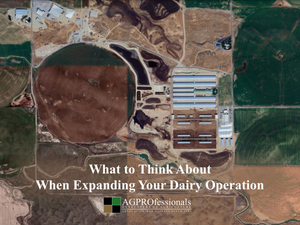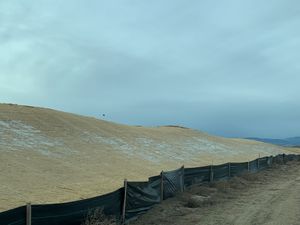Engineering Articles
Agricultural engineering is a broad technical area that can span machinery, computers, structures, drainage, and animals, among other aspects of the industry. It’s a specialized field that combines principles of civil, mechanical, and environmental engineering to meet the unique challenges of agricultural production. From facility design to environmental compliance, agricultural engineers play a critical role in supporting sustainable, efficient, and resilient agricultural operations.
AGPROfessionals specializes in the civil engineering portion of ag engineering. Specifically, we work on:
- Manure management systems, including animal manure, barn wash water, and other farm-produced water.
- Engineering for the construction of agricultural buildings and storage facilities to create a system that is functional, sustainable, and cost-efficient.
- Site layouts and grading for animal facilities to ensure drainage, animal comfort, and efficiency for workers.
- Planning and design for flood and water systems, such as grading, drainage, lagoons, and retention ponds.
- Planning and designing irrigation systems for crop production.
- Permitting for local regulations, Confined Animal Feeding Operations (CAFOs)
Expansion in dairy operations can take several forms: you can increase your herd size within your existing facility footprint, upgrade or enlarge your current facility, boost capacity by adding a new production site, or construct an entirely new facility to support long-term growth.
How should you go about expanding? Based on our experience helping hundreds of clients through this process, we have eight considerations.
STOP! Read This First…
Before we begin, you need to answer these two questions. They are critical factors for every dairy expansion.
Can Your Processor Handle More Milk at Your Current Location?
Is there additional capacity coming online, or is there a plan to ship out of state? Suppose the answer is yes. Good to know!
Have You Thought About Your Current Manure Management System, Environmental Conditions, Water Availability and Rights, Permitting Needs?
These areas are often overlooked when envisioning a dairy operation expansion. We will cover these considerations in-depth later, but they’re important enough to flag right up front.
moreHaving a team that understands the stormwater process is essential when developing your site. AGPROfessionals has successfully prepared SWMPs and SWPPPs across multiple states, including Colorado, Idaho, Kansas, and Washington. Here we give you some insight into this process, and how we can help you get your project completed.
What is Stormwater Runoff?
Stormwater runoff occurs when rain, snow, or hail flows over surfaces such as roads, driveways, sidewalks, and buildings. The imperviousness prevents water from soaking into the ground where it would be absorbed into the native soil and vegetation. As stormwater runoff moves over these surfaces, it can pick up sediment, debris, or pollutants that are then carried into storm drains or waterways.
Clean Water Act
Stormwater runoff is regulated because it can transport sediment, nutrients, and pollutants that can degrade water quality. The Water Pollution Control Act of 1948 was the first regulatory instance for stormwater management and was later amended by the Clean Water Act in 1972. This legislation established the framework for stormwater regulations, and the Environmental Protection Agency (EPA) was tasked with setting minimum standards for compliance.
more


